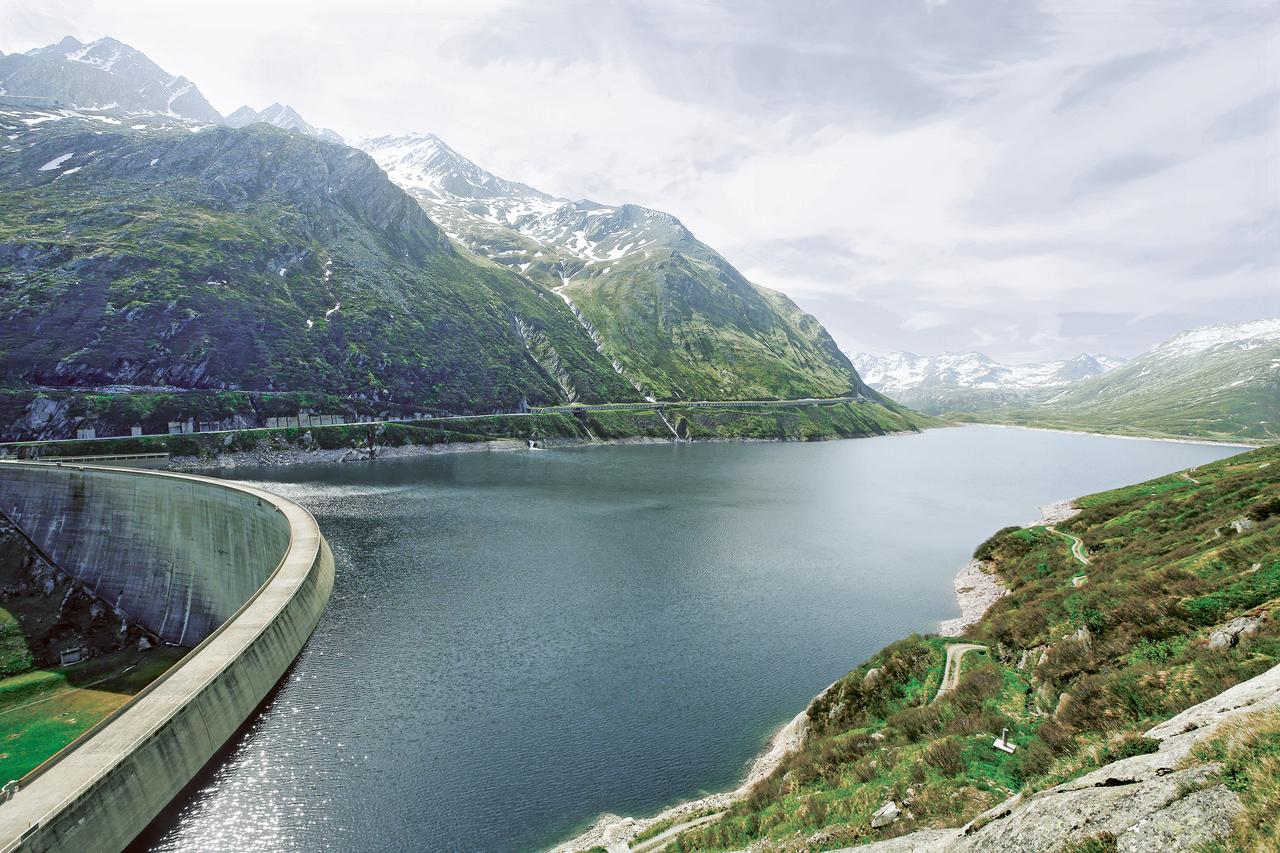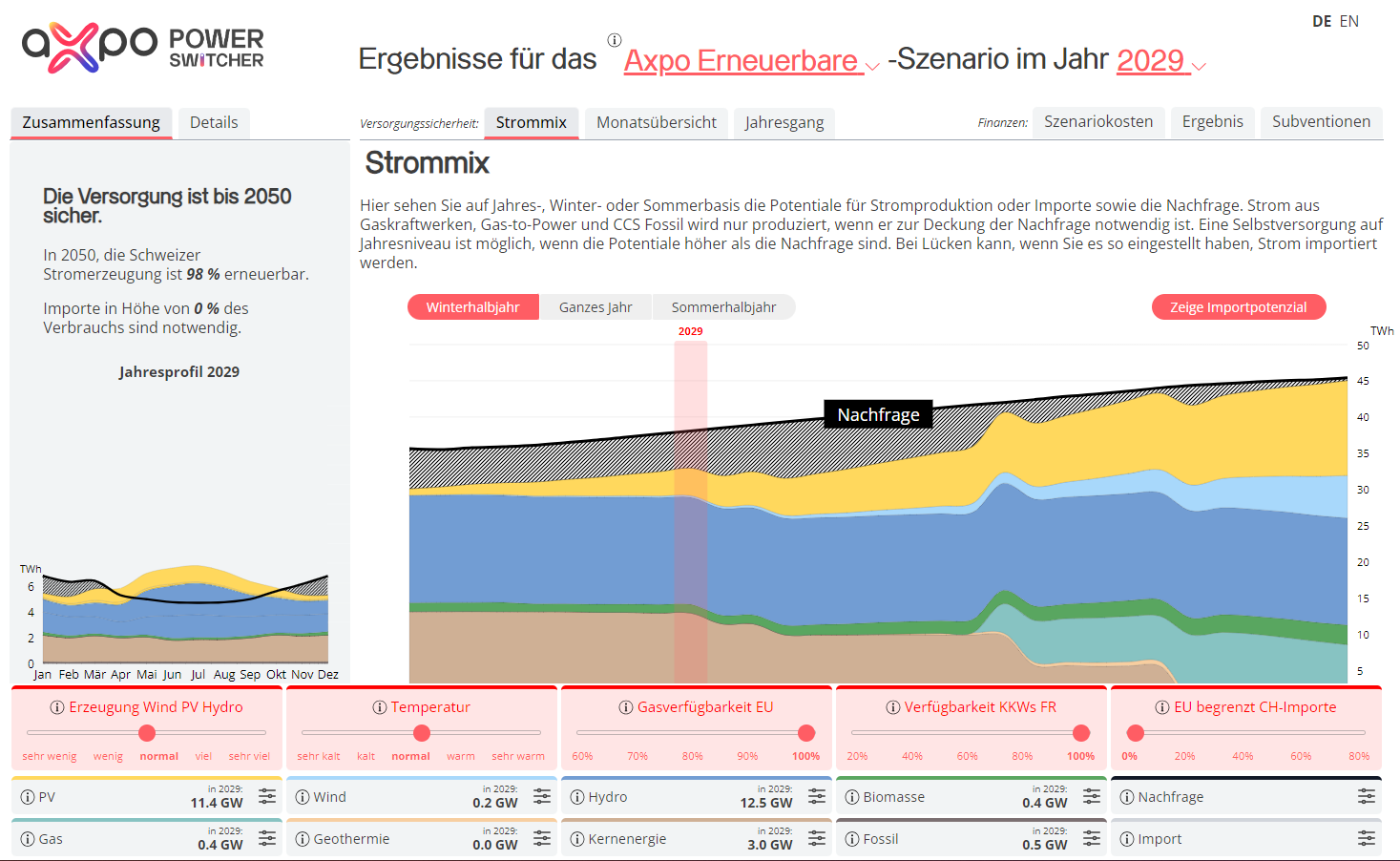30.10.2018 | Axpo's environmental product declarations for power plants
Environmental footprint
As a leading energy company Axpo is convinced that sustainability not only creates added value for people, nature and the environment, but for the company as well. Upholding this responsibility entails broad, transparent communication. As a result, Axpo has prepared environmental product declarations for various power plant types. Each declaration analyses the ecological impacts over the entire life cycle of the plants and the technologies – from construction, operation, to dismantling. The data is updated every three years.
What exactly is an environmental product declaration?
Referred to as an EPD, it identifies the environmental impacts over the life cycle of a product or service (in our case the production of 1 kWh of electricity from the analysed power plant) in order to compare the various production technologies and to achieve a targeted reduction of these ecological impacts.
What is included in an environmental product declaration?
The key element of an environmental product declaration is an ecological assessment. The first step assess the natural resources (water, energy resources, metals, minerals, etc.) that are needed to manufacture the product over all stages of the value chain and what emission volumes enter the environment (e.g. CO2, nitrogen oxide, ionising radiation or ozone-forming substances). In a second step, an impact assessment is carried out because hundreds of resources and emission substances are involved. In this process the emissions are grouped according to their potential environmental impacts. For example, CO2 as well as SF6 contribute to climate change, but SF6 has a greenhouse gas effect that is 22800 times higher. This is taken into consideration in the quantification of CO2 equivalents in the category "greenhouse gases". Other important categories are acidification, smog formation, damage to the ozone layer or fossil resource consumption.
How is the data collected?
Power plant-specific data such as the generated power volume, operating resource consumption or the amount and type of direct emissions are the basis for the ecological assessment calculation. In order to carry out the emission and resource assessment along all the stages of the value chain the products and construction material used in power plant operation are linked with generic manufacturing processes from ecological assessment data bases (e.g. 1 kg of concrete, manufactured in Switzerland).
Why must the results be verified by an independent, external authority
In order to compare environmental product declarations, they must be prepared and calculated according to defined standards. These have been established in ISO Norm 14025 and other guidelines. Environmental product declarations must be verified by an accredited independent authority before publication. In our case this is Veritas. Successful examination is confirmed with the issue of a certificate that is valid for three years. Upon successful certification the environmental product declaration is registered with the international EPD programme (www.environdec.com).
Why is Axpo making this effort?
There are several reasons as to why Axpo prepares environmental product declarations. Axpo puts great value on the dialogue with the various stakeholder groups. Environmental product declarations are a means to discuss the advantages and disadvantages of various technologies transparently and on a scientific basis. Furthermore, the analyses and preparation of environmental product declarations provide Axpo with new insights and in the best case they can lead to the realisation of improved environmental performance.
For example, at the Domat/Ems wood-fired power plant the total environmental impact was reduced by nearly half through the commissioning of the new wood-chip drying facility that made it possible to massively decrease air emissions and operating resources.
Finally, the publication of comprehensive environmental assessments – such as environmental product declarations – have a very positive effect on sustainability ratings, which have become more and more important for Axpo.
Is Axpo the only company that publishes environmental product declarations?
More companies in various sectors are publishing environmental product declarations. This trend can also be observed in the energy sector. Environmental product declarations like those Axpo prepares are also published by major industry players such as Vattenfall or Iberdrola (other environmental product declarations)
Efforts by the European Union to develop more "green" products are also driving this trend. However, Axpo is a pioneer in the Swiss energy sector and stands out in comparison to its competitors in this area.
These seven power plants have been assessed.
- Löntsch high head storage power plant
- Au-Schönenberg small-scale hydropower plant
- Wildegg-Brugg run-of-river hydropower plant
- Axpo Kompogas biomass power plant in Otelfingen
- Tegra wood-fired power plant in Domat/Ems
- Beznau nuclear power plant in Döttingen
- Rizziconi gas-fired combined-cycle power plant in Calabria, Italy
This is what Axpo's environmental product declarations look like.




.jpg)





